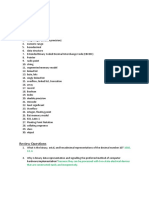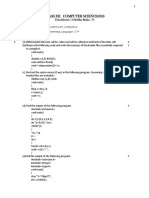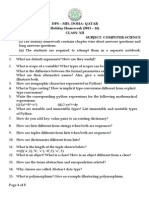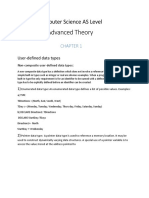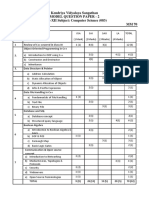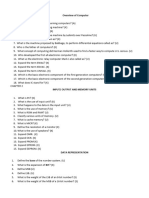0% found this document useful (0 votes)
5 views3 pagesCSA2 Practical Chapter1 Sample
Chapter 1 covers fundamental concepts of data representation, including definitions of built-in and user-defined data types, the need for user-defined types, and examples of non-composite data types. It also discusses pointers, composite data types, record types, and operations on set data types, along with file types and their characteristics. Additionally, the chapter explains floating point representation, mantissa normalization, and the implications of bit size on range and precision.
Uploaded by
oelemam40Copyright
© © All Rights Reserved
We take content rights seriously. If you suspect this is your content, claim it here.
Available Formats
Download as PDF, TXT or read online on Scribd
0% found this document useful (0 votes)
5 views3 pagesCSA2 Practical Chapter1 Sample
Chapter 1 covers fundamental concepts of data representation, including definitions of built-in and user-defined data types, the need for user-defined types, and examples of non-composite data types. It also discusses pointers, composite data types, record types, and operations on set data types, along with file types and their characteristics. Additionally, the chapter explains floating point representation, mantissa normalization, and the implications of bit size on range and precision.
Uploaded by
oelemam40Copyright
© © All Rights Reserved
We take content rights seriously. If you suspect this is your content, claim it here.
Available Formats
Download as PDF, TXT or read online on Scribd
/ 3



















